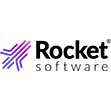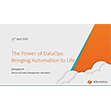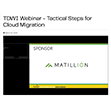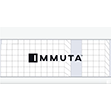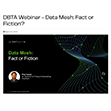
Why Integration and Governance Are Critical for Data Lake Success

This is the final article in a three-part series exploring what it takes to build a data lake capable of meeting all the requirements of a truly enterprise-scale data management platform. While earlier installments focused on enterprise-scale data management in Hadoop, data onboarding into the data lake, and security, this article will focus on two things: Integrating the data lake within the broader enterprise IT landscape, and data governance.
As more lakes are deployed, we see patterns emerge for how data lakes are positioned relative to existing databases, data warehouses, analytic appliances, and enterprise applications in larger organizations.
Data Lakes: Here to Stay
Some data lakes are deployed from the outset as centralized system-of record data platforms, serving other systems in an enterprise scale, data-as-a-service model. As a centralized data lake builds momentum, collecting more data and attracting more use cases and users, its value grows as users collaborate on improving and reusing the data.
Other projects start at the edge of the organization to deliver data and meet the analytic needs of a specific business group. A localized data lake often expands to support multiple teams or spawn additional separate data lake instances to support other groups who want the same improved data access as the first group got.
Regardless of what pattern the data lake takes as it lands and expands in the organization, the data lake’s increasing role in the organization brings with it new requirements for enterprise readiness.
Integration Challenges
To be enterprise-ready, the data lake needs to support a set of capabilities that allow it to be integrated within the company’s overall data management strategy and IT applications and data flow landscape.
Here are some requirements to keep in mind: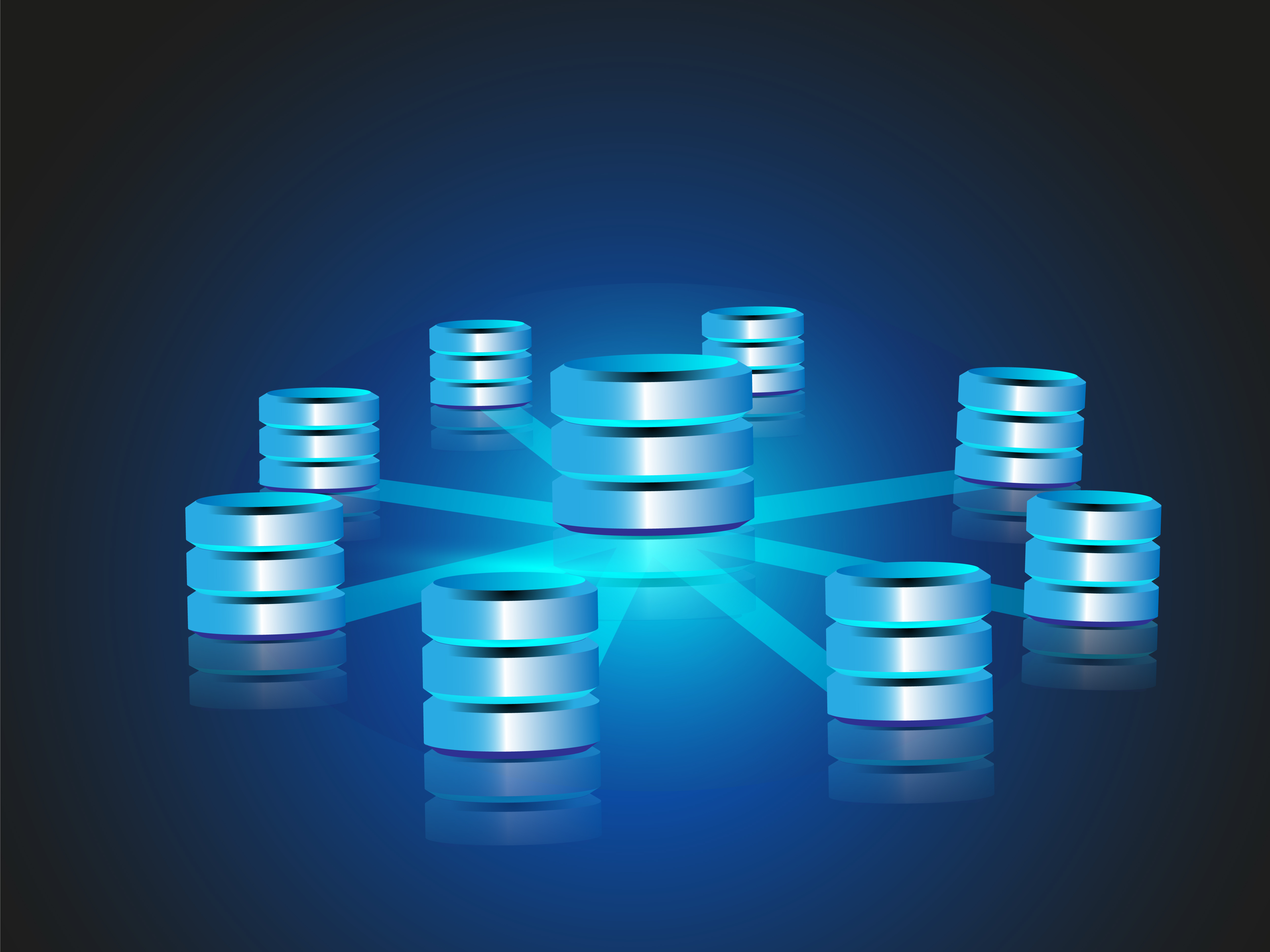
- It must be possible to automate and embed the process of interacting with the data lake so that jobs to update the lake with new data or deliver data out of the lake can be automatically called and executed in a lights-out production mode. This means that the data lake needs to provide a RESTFul API that can be called by other scripts or schedules in the environment and which exposes all the functionality needed to interact with the data lake in a production environment.
- The data lake needs to be able to export data and associated metadata in multiple formats so that data from the lake can be easily integrated with other applications or downstream reporting/analytic systems.
- The data lake needs to support development, test, and production environments and allow for the easy promotion of data ingest, data preparation, and similar assets developed in the data lake environment from one environment to the next.
- The data lake needs to make it easy for parts of the lake to be shared across separate Hadoop clusters so that in a large organization with multiple data lakes, data, metadata and related assets can be easily and consistently shared.
- It must be possible for metadata collected and generated in the data lake to be exchanged with other enterprise standard metadata repositories.
Governing the Lake
In addition to streaming the integration of your data lake, you must prepare the lake to support a broad and expanding community of business users.
As more users begin working with the data lake directly or through downstream applications or reporting/analytic systems, the importance of having strong data governance grows. This topic — data governance — is the final dimension of enterprise readiness.
By bringing together typically hundreds of diverse data sets in a large repository and giving users unprecedented direct access to that data, data lakes create new governance challenges and opportunities.

(Tashatuvango/Shutterstock)
The challenges have to do with ensuring that data governance policies and procedures exist and are enforced in the lake. Enterprise-ready data governance in the data lake starts with a clear definition of who owns or has custodial responsibility for each data asset as it enters the lake and as it is maintained and enhanced through the data lake process. In addition, the data lake needs to include well-documented policies regarding the required accuracy, accessibility, consistency, completeness, and updating of each data source.
To monitor and enforce application of these policies, the data lake environment must automatically profile each data source on ingest with respect to the data quality, character, and completeness. Additionally, the data lake should automatically track and record any manipulation of data assets (cleansing, transformation, preparation) to provide a clear audit trail of all users and activities occurring in the lake.
Finally, when it comes to enterprise-scale data governance in a data lake, it is essential that restrictions are in place to ensure that people only see the data they should be allowed to see. (See part two of this series for more on the importance of authentication, authorization and data access controls.)
Virtuous Cycles at Enterprise Scale
But data governance’s role in a truly enterprise-ready data lake isn’t only to reduce risk and enforce controls. It can also create added value and enable richer broader collaboration around data across users and groups.
If designed properly, data lakes are unique in their ability to allow large populations of non-technical business users to access, explore, and enhance data as they move it along the evolutionary path, from raw source system data to business user ready information.
Good data governance abets this process by helping business users enhance data with crowd-sourced business metadata and tagging that adds context, business definition, and meaning to the data. Combined with data governance policies that selectively cull and promote the best of this crowd-sourced insight to “gold standard” data in the organization, participation of a growing group of business users in the enterprise scale data lake can create a virtuous cycle in which user participation enhances data, bringing more users, more enhancement, and ultimately more value to the lake.
About the author: Dr. Paul Barth is founder and CEO of Podium Data, creator of the Podium big data  management platform. Paul has spent decades developing advanced data and analytics solutions for Fortune 100 companies, and is a recognized thought-leader on business-driven data strategies and best practices. Prior to founding Podium Data, Paul co-founded NewVantage Partners, a boutique consultancy advising C-level executives at leading banking, investment, and insurance firms. In his roles at Schlumberger, Thinking Machines, Epsilon, Tessera, and iXL, Dr. Barth led the discovery and development of parallel processing and machine learning technologies to dramatically accelerate and simplify data management and analytics. Paul holds a PhD in computer science from the MIT, and an MS from Yale University.
management platform. Paul has spent decades developing advanced data and analytics solutions for Fortune 100 companies, and is a recognized thought-leader on business-driven data strategies and best practices. Prior to founding Podium Data, Paul co-founded NewVantage Partners, a boutique consultancy advising C-level executives at leading banking, investment, and insurance firms. In his roles at Schlumberger, Thinking Machines, Epsilon, Tessera, and iXL, Dr. Barth led the discovery and development of parallel processing and machine learning technologies to dramatically accelerate and simplify data management and analytics. Paul holds a PhD in computer science from the MIT, and an MS from Yale University.
Related Items:
Delivering on the Data Lake Promise
Building the Enterprise-Ready Data Lake: What It Takes To Do It Right
August 29, 2025
- Argonne Researchers Give Presentations at Data Management Conference
- Big Data Expo 2025 in China Spotlights Data Resources, AI, and Industrialization
- NSF Facilities Partner to Transform Data Processing for Next-Gen Radio Astronomy
August 28, 2025
- Pecan AI Brings Explainable AI Forecasting Directly to Business Teams
- Virtualitics Introduces Iris with Mission-Tuned AI Agents for DoD and Beyond
- EDB Outlines Future of Lakehouse and Strategies for Intelligent Applications at Supermicro Open Storage Summit
- Cerebras and Core42 Launch Global Access to OpenAI’s gpt-oss-120B
August 27, 2025
- Acceldata Announces General Availability of Agentic Data Management
- Data Streaming Summit 2025 Returns to San Francisco with 30-Plus Sessions Across Four Tracks
- CDAO Fall 2025 Opens Registration for Boston Conference
- Ataccama Data Trust Assessment Reveals Data Quality Gaps Blocking AI and Compliance
- Apache Software Foundation Expands Tools, Governance, and Community in FY2025
- Coalesce Launches JOIN Community Discussions on Data Strategy and AI
- Alluxio Reports Q2 Growth as Enterprise AI 3.7 Advances AI Data Performance
- OpenText and Ponemon Institute Survey of CIOs Finds Lack of Information Readiness Threatens AI Success
- Domo Announces Enhanced Cloud Integration Capabilities with BigQuery
August 26, 2025
- MariaDB Accelerates Cloud Deployments, Adds Agentic AI and Serverless Capability with Acquisition of SkySQL
- OpenLight Raises $34M Series A to Scale Next-Gen Integrated Photonics for AI Data Centers
- Domo Unveils Enhanced Cloud Integration Upgrades for Snowflake
- NVIDIA: Industry Leaders Transform Enterprise Data Centers for the AI Era with RTX PRO Servers
- Rethinking Risk: The Role of Selective Retrieval in Data Lake Strategies
- Why Metadata Is the New Interface Between IT and AI
- Why OpenAI’s New Open Weight Models Are a Big Deal
- Beyond Words: Battle for Semantic Layer Supremacy Heats Up
- What Are Reasoning Models and Why You Should Care
- Software-Defined Storage: Your Hidden Superpower for AI, Data Modernization Success
- This Big Data Lesson Applies to AI
- LinkedIn Introduces Northguard, Its Replacement for Kafka
- What Is MosaicML, and Why Is Databricks Buying It For $1.3B?
- Cube Ready to Become the Standard for Universal Semantic Layer, If Needed
- More Features…
- Mathematica Helps Crack Zodiac Killer’s Code
- BigDATAwire Exclusive Interview: DataPelago CEO on Launching the Spark Accelerator
- GigaOm Rates the Object Stores
- Solidigm Celebrates World’s Largest SSD with ‘122 Day’
- McKinsey Dishes the Goods on Latest Tech Trends
- Google Pushes AI Agents Into Everyday Data Tasks
- The Top Five Data Labeling Firms According to Everest Group
- Oracle Launches Exadata Service for AI, Compliance, and Location-Critical Workloads
- Databricks Now Worth $100B. Will It Reach $1T?
- EU’s AI Act Enters New Enforcement Phase
- More News In Brief…
- Gartner Predicts 40% of Generative AI Solutions Will Be Multimodal By 2027
- Seagate Unveils IronWolf Pro 24TB Hard Drive for SMBs and Enterprises
- LF AI & Data Foundation Hosts Vortex Project to Power High Performance Data Access for AI and Analytics
- Deloitte Survey Finds AI Use and Tech Investments Top Priorities for Private Companies in 2024
- Dell Unveils Updates to Dell AI Data Platform
- NVIDIA AI Foundry Builds Custom Llama 3.1 Generative AI Models for the World’s Enterprises
- Redpanda Partners with Databricks to Deliver One‑Step Stream‑to‑Table Iceberg Integration for Real‑Time Lakehouses
- Computing Community Consortium Outlines Roadmap for Long-Term AI Research
- Transcend Expands ‘Do Not Train’ and Deep Deletion to Power Responsible AI at Scale for B2B AI Companies
- Acceldata Announces General Availability of Agentic Data Management
- More This Just In…
















